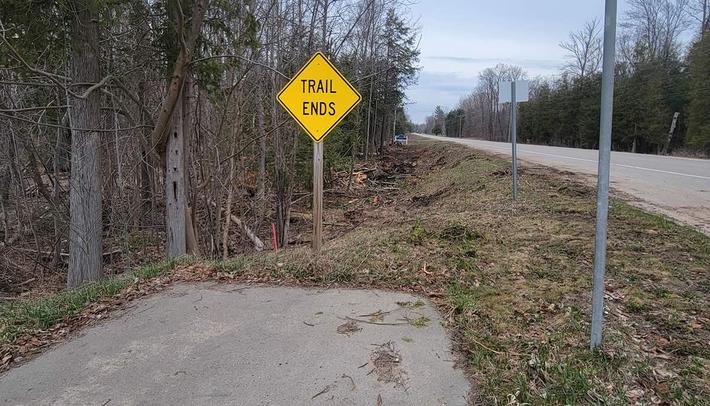
The Language That Was Almost Lost
The near-destruction and recent revival of Anishinaabemowin
By Al Parker | June 17, 2023
In the middle of June, the downtown streets of Harbor Springs bustle with visitors whose boats pack the harbor. At the end of Main Street, there’s an old church that once led one of the longest-running Native American boarding schools in the nation: Holy Childhood of Jesus.
That school and others like it played a major role in an effort to destroy the language and culture of native peoples across northern Michigan and beyond.
Anishinaabemowin, the native language of the Anishinaabe or Ojibwe people, was nearly extinct until a flickering ember of interest was nourished and grew into a steady flame of learning for younger generations.
“About 25 years ago, students began meeting at the Indian Hills Gallery,” explains Netawn Kiogima, language director of the Little Traverse Bay Bands of Odawa Indians (LTBB) based in Charlevoix and Emmet counties. Kiogima heads up an effort to teach the tribal language to anyone interested in learning one of the oldest and most historically important Native American languages in North America.
Her interest in the language goes back more than two decades when she attended an event at Bay Mills Community College. “I went to one of their summer language programs,” says Kiogima, who had been active at annual powwows as a teenage dancer. “Of course, I knew of my Odawa identity and wanted to learn more.”
Erasing Culture
To understand how Kiogima’s native language almost vanished after centuries of use, it’s important to learn more about the Holy Childhood school, built in 1829, reportedly with the help of members of the LTBB.
“Back then lessons were taught in Anishinaabemowin,” the LTTB Director of Archives and Records Eric Hemenway told National Public Radio in a 2015 report. “The kids were encouraged to speak Anishinaabemowin.”
Fast-forward 60 years, and things had changed dramatically at Holy Childhood, which was run by the Catholic Church.
In the late 1880s, the federal government took control of Native American education and created policies designed to wipe out native languages and cultures. Haircuts, clothing, and even the ways students spoke were regimented to erase the tribal culture and traditions. All of this was an effort to conform students to white Christian American standards.
Students at Holy Childhood were forbidden to speak Anishinaabemowin, and punishment was strict and severe. The U.S. Department of the Interior released a report in 2022 that found between 1819 and 1969, the U.S. ran or supported 408 boarding schools, where students endured “rampant physical, sexual, and emotional abuse.” The report also recorded more than 500 deaths of Native children.
“That’s how we almost lost our language, because they quit speaking it,” one former Holy Childhood student said in the NPR report.
And the effort to revive the language still faces challenges. Instructors or “speakers” are typically elders and are dwindling in numbers. The LTBB relies mainly on a small number who live in Ontario and parts of Michigan.
“In the last 10 years, we’ve lost a lot of speakers,” says Kiogima, who earned her bachelors and master’s degrees in the language department at Central Michigan University. “It’s a complicated language because it describes what’s happening. It takes several years to learn and then be able to teach.”
Reviving Interest
Like so many other aspects of society, the LTTB's Anishinaabemowin classes were impacted by the pandemic. “Before COVID, interest was strong,” says Kiogima. “We had about 20 enrolled from the community and on Zoom it went to about 40.”
The classes are taught mostly online, in part because the instructors are not always local. Today, there are only about a dozen students in the program, including Kiogima’s two adult children.
Sarah Schilling is a 29-year-old member of the LTBB and she’s been inspired to take the language classes to help it stay alive and pass it down to the next generation.
“As Anishinaabe, we’re taught to think of the generations that came before us and the ones who will come after,” she explains. “As an individual, I was really drawn in by how descriptive Anishinaabemowin is. Hearing speakers and teachers break down words to show what the word is describing intrigues me. I stay inspired to continue learning by getting these glimpses into the way our ancestors saw the world.”
Schilling says learning the language helps her connect with her culture because the two things are so intertwined.
“As I’ve learned more Anishinaabemowin, I am able to understand more songs and prayers,” Schilling says. “I enjoy cultural crafts, and knowing the words for the materials helps me connect to what I’m making in a deeper way. I also love to be able to identify plants and learning their names in the language makes me feel more connected to the natural world.”
It was a talented tribal artisan who guided 28-year-old Jenna Wood toward the language classes.
“I worked with Yvonne Walker Keshick learning quillwork, and within that process she told me she thought her biggest barrier to learning more of our culture was understanding more of the language,” says Wood.
“I took her advice and signed up for classes even though I was apprehensive,” Wood continues. “I’ve taken classes for about three years now, and my understanding is growing. My everyday experiences and interactions with people, objects, [and] beings is more in-depth because the language helps me see relationships and my place in those relationships too.”
Sharing with the Next Generation
Both Wood and Schilling are quick to encourage others to learn the language. Wood speaks the language to her youngest nephew, a bright seven-year-old who has a natural knack for pronunciation.
“He listens in on my classes sometimes,” she says. “I try to incorporate Anishinaabe words of things into the books we read, games we play, or when we take walks with the dog.”
“Not everyone can set aside the time for classes, but there’s so many books and online resources now to help folks learn a few words at a time,” says Schilling. “I find the more I learn, the easier it is to make time for classes and studying.”
In addition to the regular classes provided by the LTBB, an opportunity to learn more about the language will be available at the 28th annual Anishinaabe Family Language and Culture Camp held July 28-29 in Manistee. It’s sponsored by the Little River Band of Ottawa Indians and features presentations on cultural teachings, traditional medicines, craft making, games, and learning the language.
For more information, visit ltbbodawa-nsn.gov/departments/language and anishinaabemdaa.com.
Trending

Walking in an Artsy Wonderland
Michigan Legacy Art Park is hosting the “Raindrops” artwork created by Dewey Blocksma and Patricia Innis at th... Read More >>
Seven Takeaways from Local Real Estate Agents for the Spring/Summer Market
The last few years in local real estate have been akin to what one local agent described as the “wild west,” w... Read More >>
Blazing the Boyne City to Charlevoix Trail
We’re getting ever closer to an interconnected northern Michigan thanks to ongoing work on the Boyne City to Charlev... Read More >>


